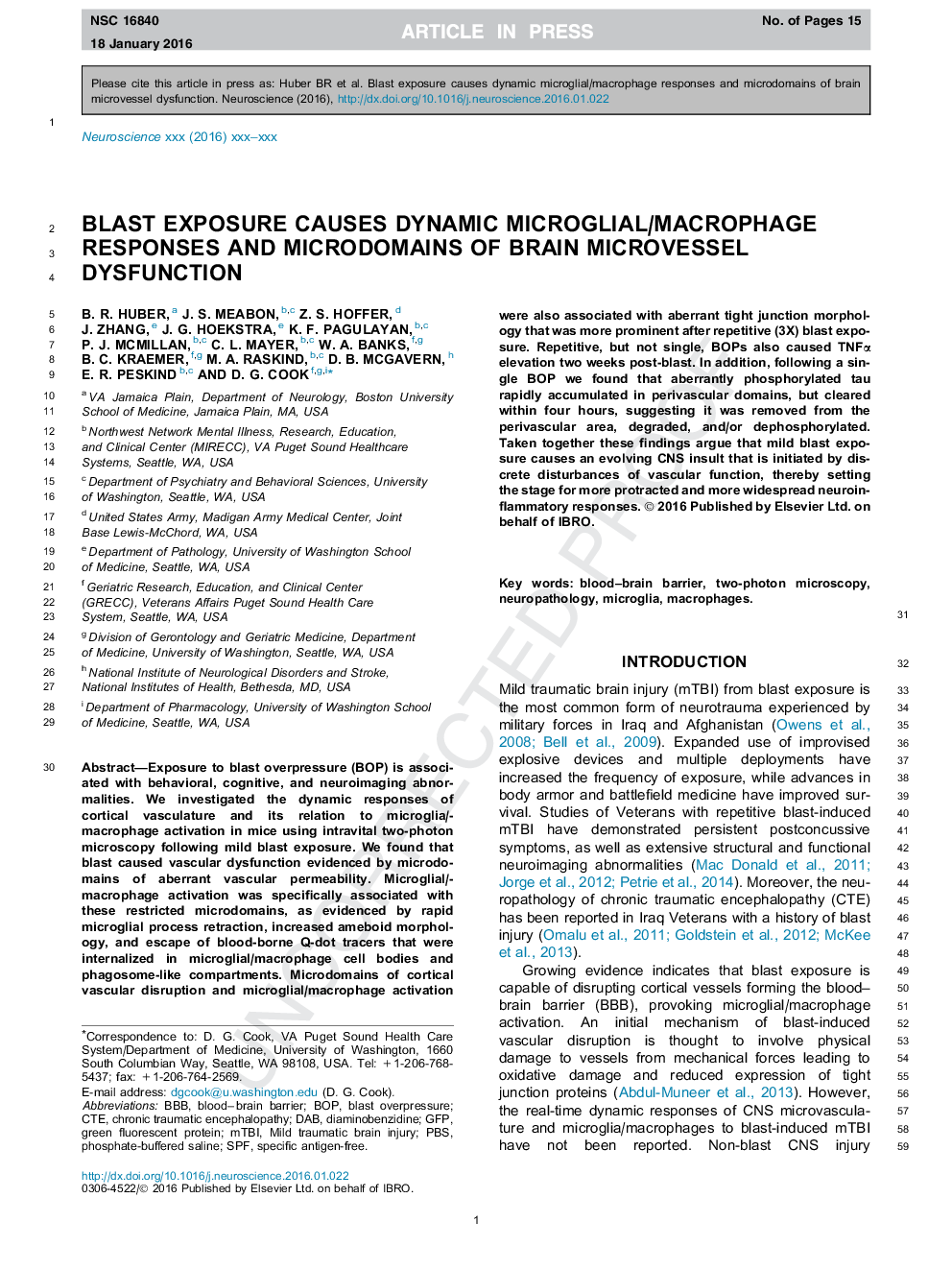| Article ID | Journal | Published Year | Pages | File Type |
|---|---|---|---|---|
| 6271370 | Neuroscience | 2016 | 15 Pages |
Abstract
Exposure to blast overpressure (BOP) is associated with behavioral, cognitive, and neuroimaging abnormalities. We investigated the dynamic responses of cortical vasculature and its relation to microglia/macrophage activation in mice using intravital two-photon microscopy following mild blast exposure. We found that blast caused vascular dysfunction evidenced by microdomains of aberrant vascular permeability. Microglial/macrophage activation was specifically associated with these restricted microdomains, as evidenced by rapid microglial process retraction, increased ameboid morphology, and escape of blood-borne Q-dot tracers that were internalized in microglial/macrophage cell bodies and phagosome-like compartments. Microdomains of cortical vascular disruption and microglial/macrophage activation were also associated with aberrant tight junction morphology that was more prominent after repetitive (3Ã) blast exposure. Repetitive, but not single, BOPs also caused TNFα elevation two weeks post-blast. In addition, following a single BOP we found that aberrantly phosphorylated tau rapidly accumulated in perivascular domains, but cleared within four hours, suggesting it was removed from the perivascular area, degraded, and/or dephosphorylated. Taken together these findings argue that mild blast exposure causes an evolving CNS insult that is initiated by discrete disturbances of vascular function, thereby setting the stage for more protracted and more widespread neuroinflammatory responses.
Keywords
Related Topics
Life Sciences
Neuroscience
Neuroscience (General)
Authors
B.R. Huber, J.S. Meabon, Z.S. Hoffer, J. Zhang, J.G. Hoekstra, K.F. Pagulayan, P.J. McMillan, C.L. Mayer, W.A. Banks, B.C. Kraemer, M.A. Raskind, D.B. McGavern, E.R. Peskind, D.G. Cook,
